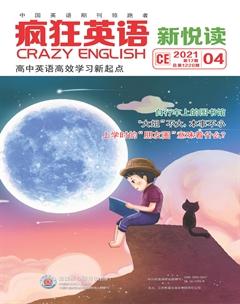Task 1
本刊试题研究中心
Returning to a book youve read many times can feel like drinks with an old friend. Theres a welcome familiarity—but also sometimes a slight suspicion that time has changed you both, and thus the relationship. But books dont change, people do. And thats what makes the act of rereading so rich and transformative.
The beauty of rereading lies in the idea that our bond with the work is based on our present mental register. Its true, the older I get, the more I feel time has wings. But with reading, its all about the present. Its about the now and what one contributes to the now, because reading is a give and take between author and reader. Each has to pull their own weight.
There are three books I reread annually. The first, which I take to reading every spring, is Ernest Hemningways A Moveable Feast. Published in 1964, its his classic memoir of 1920s Paris. The language is almost intoxicating (令人陶醉的), an aging writer looking back on an ambitious yet simpler time. Another is Annie Dillards Holy the Firm, her poetic 1975 ramble(隨笔) about everything and nothing. The third book is Julio Cortzars Save Twilight: Selected Poems, because poetry. And because Cortzar.
While I tend to buy a lot of books, these three were given to me as gifts, which might add to the meaning I attach to them. But I imagine that, while money is indeed wonderful and necessary, rereading an authors work is the highest currency a reader can pay them. The best books are the ones that open further as time passes. But remember, its you that have to grow and read and reread in order to better understand your friends.
1. Why does the author like rereading?
A. It evaluates the writerreader relationship.
B. Its a window to a whole new world.
C. Its a substitute for drinking with a friend.
D. It extends the understanding of oneself.
2. What do we know about the book A Moveable Feast?
A. Its a brief account of a trip.
B. Its about Hemingways life as a young man.
C. Its a record of a historic event.
D. Its about Hemingways friends in Paris.
3. What does the underlined word “currency” in paragraph 4 refer to?
A. Debt. B. Reward.
C. Allowance. D. Face value.
4. What can we infer about the author from the text?
A. He loves poetry. B. Hes an editor.
C. Hes very ambitious. D. He teaches reading.

